Jamaica’s Endemic Subspecies #1
So, now after having delineated 28 species of birds endemic to Jamaica (including the two forms of the Streamertail, currently lumped but he AOU), it’s time I start introducing the endemic subspecies.
Some are so distinctive as to clearly warrant species-level recognition, while others aren’t so different from mainland or other island forms, and you have to wonder why they have a distinctive name. But for the most part they simply aren’t so well known. The conundrum with subspecific designation is that they get less attention from birders, ornithologists, and conservationists, so tragically some of them are disappearing faster than if they were accorded species status. I personally believe that island-specific species and subspecies should be treated equally from a listing and conservation perspective. If they are distinctive enough to be recognizable, then that’s all you need. They’re obviously on a separate evolutionary trajectory, gene flow is clearly limited, and if you were to come back 1 million years from now, you’d see the effects of natural selection, vicariance, genetic drift, and the like and wonder why anyone ever considered them the same. But at what exact point in time between now and a million years from now do you announce species-level distinction? Now, obviously, before it’s too late.
I’ll start with the very scarce and local Plain Pigeon, for which I don’t have a photo. I’ve only heard it twice and seen it flight once. Voice would be a good clue to determine how distinctive it is from the other subspecies, which occur on Cuba, Hispaniola, and Puerto Rico, but the available recordings at Macauley (zero) and Xeno-canto (two) aren’t a big enough sample size. The other subspecies are more common, so the Jamaican birds aren’t getting the conservation attention they probably deserve. Hunting is a common sport in Jamaica, and while these and the Ringtail are protected, there is not much enforcement.
The Common Ground-Dove has at least 10 subspecies in the Caribbean region alone, and it would be nice to see a paper that compares them all. But at least in comparison to mainland forms, the Jamaican birds are very different – much more colorful and with a striking yellow bill.The voice seems more comparable to South American forms, interestingly.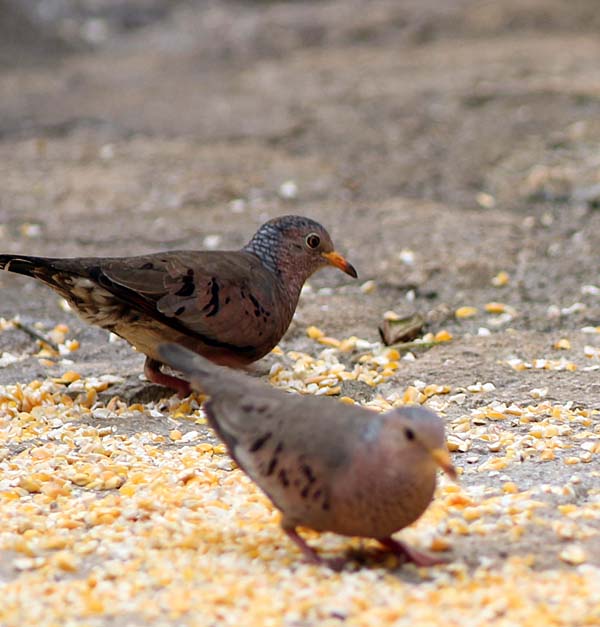
Caribbean Dove has four subspecies, also on San Andrés, Cayman Islands, and the Yucatan region, and it’s pretty clear that they do not wander between all these islands. The one on Jamaica is probably the most colorful and striking member of the genus Leptotila.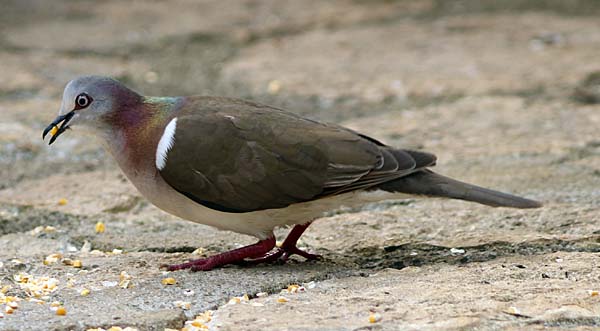
The Olive-throated Parakeet on Jamaica is the originally described form, the nominate subspecies. Steve Howell, in his and Sophie Webb’s Guide to the Birds of Mexico and Northern Central America split the mainland subspecies astec and called it Aztec Parakeet. They look and sound different, don’t occur anywhere near Jamaica, and I’d say this split is a no-brainer. Apparently there are some Olive-throated Parakeets on Hispaniola, most certainly introduced.
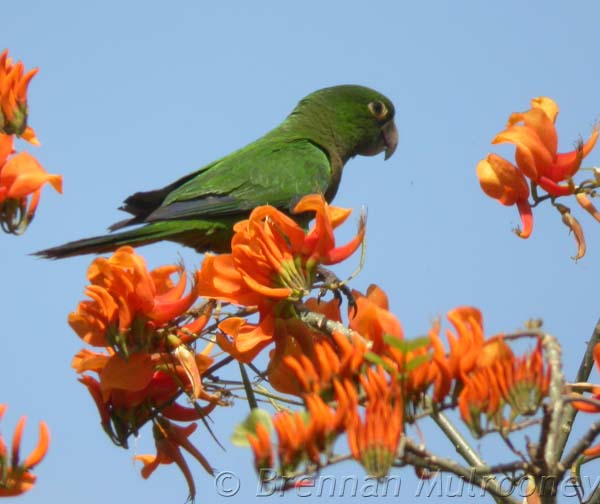 The differences – vocal as well as visual – between the Jamaican and mainland forms of the Northern Potoo are difficult to discern. I suspect the subspecific designation was based on measurements of specimens. But since it doesn’t seem that this species would be a very good disperser from the mainland to far-flung islands, I suspect that the ones on Jamaica will evolve in complete isolation and should therefore be considered separate species.
The differences – vocal as well as visual – between the Jamaican and mainland forms of the Northern Potoo are difficult to discern. I suspect the subspecific designation was based on measurements of specimens. But since it doesn’t seem that this species would be a very good disperser from the mainland to far-flung islands, I suspect that the ones on Jamaica will evolve in complete isolation and should therefore be considered separate species.
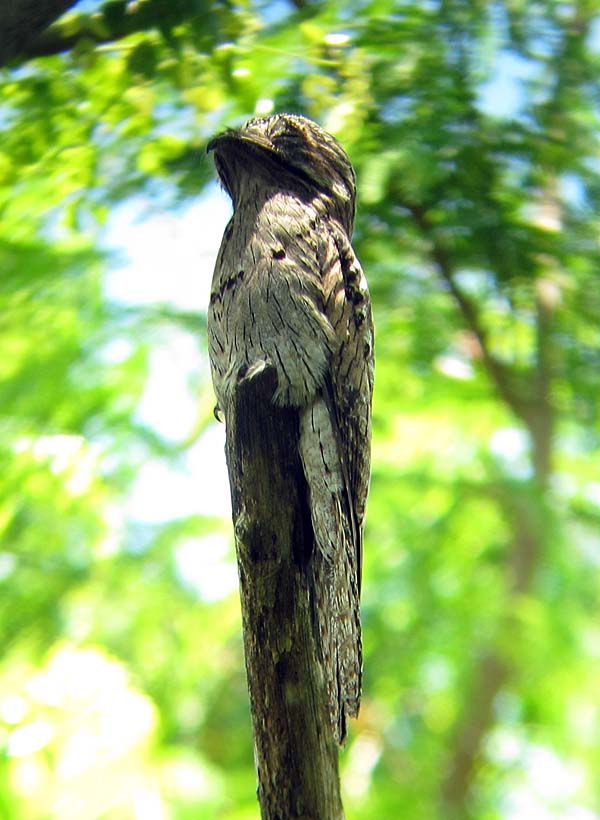
Here is one of my groups looking at this particular potoo.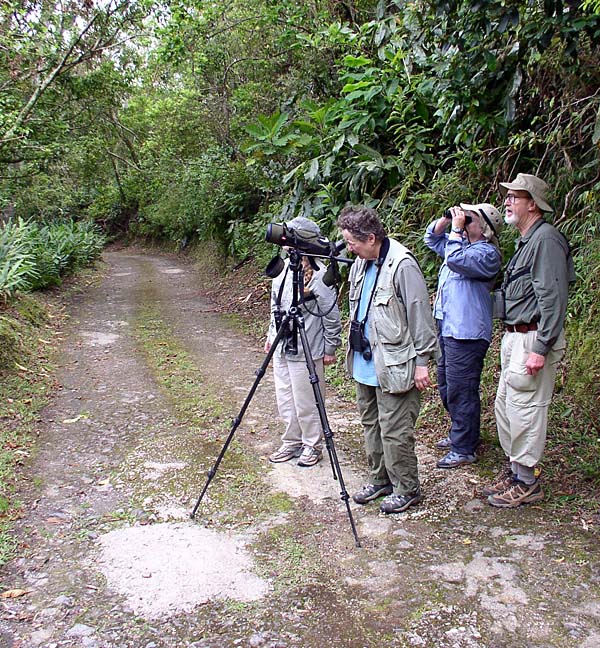
Potoos are notoriously difficult to spot in the daytime, masquerading as the end of a dead branch.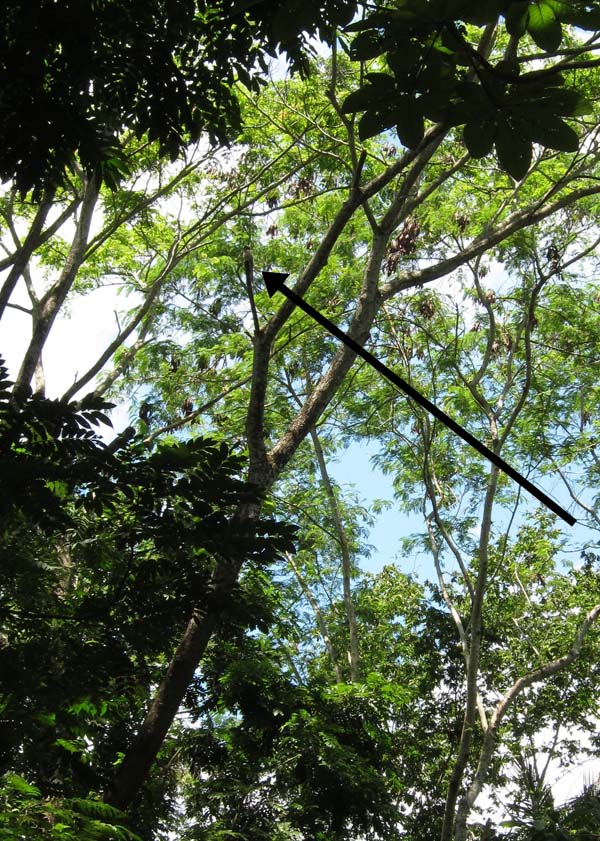
The final species I’ll mention in this blog is Vervain Hummingbird, whose average measurements make it the second smallest species of bird in the world. That this species lacks bright colors certainly contributes to our limited human ability to compare it to the similarly drab hummingbird also labeled as Vervain Humminbgird from the island of Hispaniola. They may very well be each other’s closest relative, but they will never, ever have the chance to interbreed, and their voices are certainly recognizable in published recordings, so let’s all agree to the simple logic that they are not the same and should be treated as species.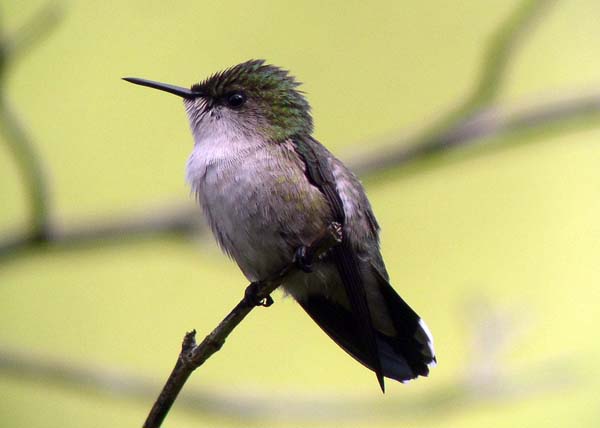
On one of my tours we had the luck of finding a Vervain Hummingbird nest.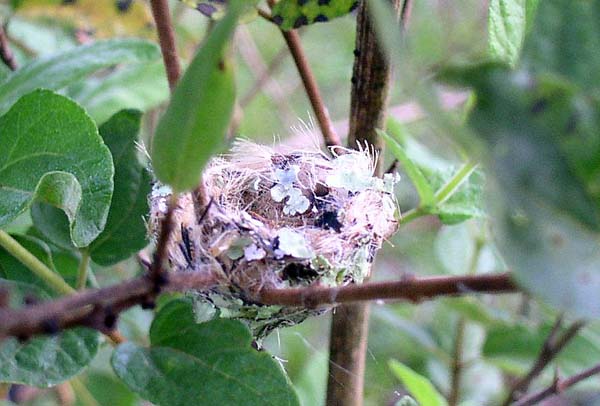
Voilá – Jamaica now has 34 endemics.
Photo at top: Jamaican Northern Potoo on a nest.

Wow! They are all lovely. Nice share.